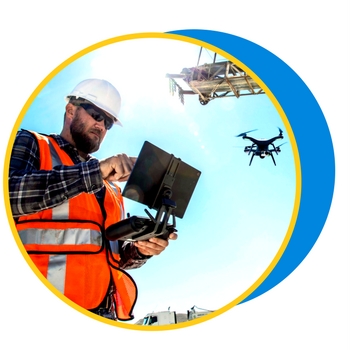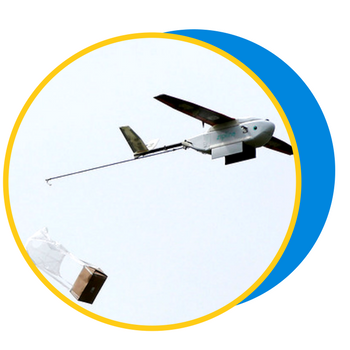What does the future hold for drones?

We’ve written previously about the fascinating history of drones. But the future of drones for business depends heavily on whether the government decide to clamp down on their use. For now, things are looking promising. From construction surveillance to use in the military, drones are becoming more intelligent each day. Here we look into the future of these little flying machines and where they’re headed.
Construction

Drones have been breaking into the construction industry for a couple of years now. The eyes in the sky provide data and insight far more effectively than any man or helicopter can. This article on Fortune.com states: ‘Collectively, that intelligence allows construction companies to more efficiently deploy resources around a job site, minimize potential issues, trim costs, and limit delays.’
The drones will fly over sites and with the right technology and thermal surveying from the drones, builders can turn the data they come back with into 3D structural models, topographical maps, and volumetric measurements. Due to the growth of the population and the urgent need for more homes, construction is often at the forefront of rapid growth in terms of technology. Ben Gorham, director of drone flying construction company Sky Revolution, says:
“The construction and facilities management sectors are some of the largest current beneficiaries of sector growth, and early adopters are busy leveraging the cost, speed and safety advantages of drone inspection, land surveying, 3D modelling and image capture services.”
Military

In 2002, a drone was used in a CIA operation for the first time. The drone, known as an unmanned Predator drone, was targeting Osama bin Laden in a strike. Although he was not found, a weapon previously created for surveillance killed three men that day. Since then, drones have been used by the military in over 500 strikes and operators that are in safety zones, hundreds of miles away, power them.
Rolling Stone magazine reported that the latest drone tests carried out in 2016 by the Department of Defence’s Strategic Capabilities Office and the Navy’s Air Systems Command in America managed to release a staggering 103 drones. This sort of weaponry is called a ‘micro-drone swarm test’ and is essentially an arms race. It’s a scary thought just how much damage a drone can do by someone who is essentially sat in front of a computer screen in safety.
“The weekend that President Trump took office, three authorised U.S. drone strikes took place in Yemen, targeting alleged members of al-Qaeda. Thirty people were killed, including 10 women and children. One of the children killed was the eight-year-old daughter of Anwar Awlaki, the American imam who joined Al Qaeda in Yemen and who himself was killed by a U.S. drone strike in 2011,” Rolling Stone reported.
This weaponry is difficult to understand. It’s alien to people who can only compare it to a video games they’ve perhaps played. The fact that drones can enter danger zones and harm civilians isn’t not a positive thought, even though the message the U.S. is trying to spread is one of protection.
Medicine

On the opposite end of the spectrum to the military, drones are being used to carry lightweight medicines and samples to hard-to-reach areas and save lives. This is already happening in Malawi in Africa but there are more plans in the pipeline for the rest of the world. Drones respond to coordinate mapping, so you can set them off and they should reach their destination with little trouble.
Further to this idea, engineer Star Simpson, from San Francisco robotics company, Otherlab, is in the process of building a drone made from cardboard that carries around two pounds of medicine and then dissolves once it’s done the job. The model is called Aspara, which stands for ‘Aerial Platform Supporting Autonomous Resupply Actions.’
‘The Aspara is designed to be deployed by the hundreds or thousands, to deliver supplies during a humanitarian crisis, or in a battle’s aftermath. For security and ecological reasons alike, the last thing anyone wants is a landscape covered in drone bits,’ reports Wired.
This product is close to being completed, the team are just finalising electrical bits that will decompose in a matter of days, then they will be ready – watch this space.




